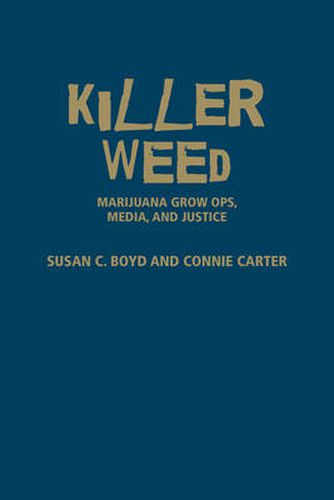Readings Newsletter
Become a Readings Member to make your shopping experience even easier.
Sign in or sign up for free!
You’re not far away from qualifying for FREE standard shipping within Australia
You’ve qualified for FREE standard shipping within Australia
The cart is loading…






Since the late 1990s, marijuana grow operations have been identified by media and others as a new and dangerous criminal activity of epidemic proportions. With Killer Weed, Susan C. Boyd and Connie Carter use their analysis of fifteen years of newspaper coverage to show how consensus about the dangerous people and practices associated with marijuana cultivation was created and disseminated by numerous spokespeople including police, RCMP, and the media in Canada. The authors focus on the context of media reports in Canada to show how claims about marijuana cultivation have intensified the perception that this activity poses significant dangers to public safety and thus is an appropriate target for Canada’s war on drugs.
Boyd and Carter carefully show how the media draw on the same spokespeople to tell the same story again and again, and how a limited number of messages has led to an expanding anti-drug campaign that uses not only police, but BC Hydro and local municipalities to crack down on drug production. Going beyond the newspapers, Killer Weed examines how legal, political, and civil initiatives that have emerged from the media narrative have troubling consequences for a shrinking Canadian civil society.
$9.00 standard shipping within Australia
FREE standard shipping within Australia for orders over $100.00
Express & International shipping calculated at checkout
Since the late 1990s, marijuana grow operations have been identified by media and others as a new and dangerous criminal activity of epidemic proportions. With Killer Weed, Susan C. Boyd and Connie Carter use their analysis of fifteen years of newspaper coverage to show how consensus about the dangerous people and practices associated with marijuana cultivation was created and disseminated by numerous spokespeople including police, RCMP, and the media in Canada. The authors focus on the context of media reports in Canada to show how claims about marijuana cultivation have intensified the perception that this activity poses significant dangers to public safety and thus is an appropriate target for Canada’s war on drugs.
Boyd and Carter carefully show how the media draw on the same spokespeople to tell the same story again and again, and how a limited number of messages has led to an expanding anti-drug campaign that uses not only police, but BC Hydro and local municipalities to crack down on drug production. Going beyond the newspapers, Killer Weed examines how legal, political, and civil initiatives that have emerged from the media narrative have troubling consequences for a shrinking Canadian civil society.